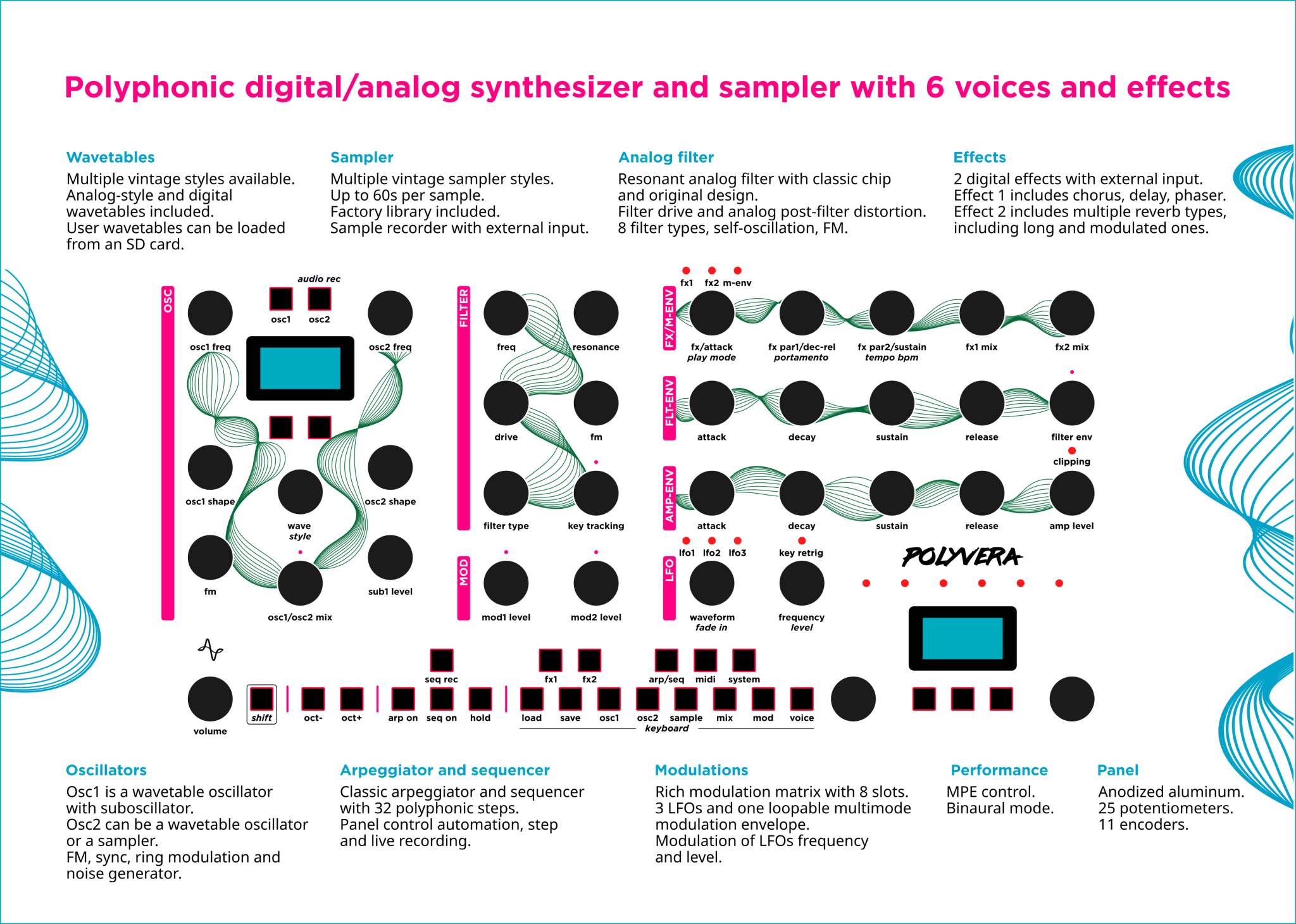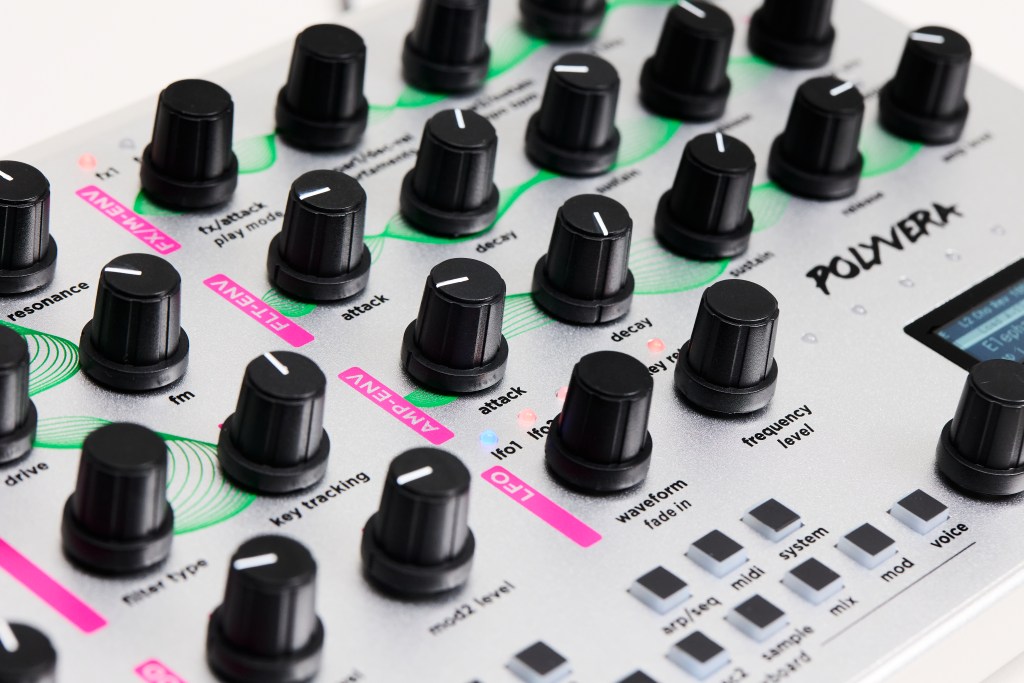
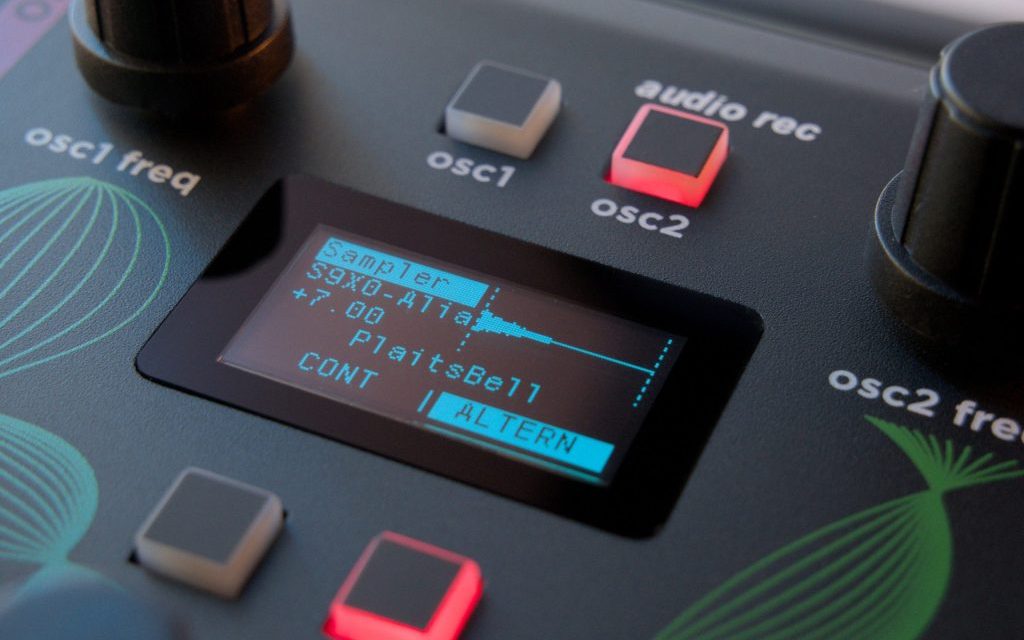
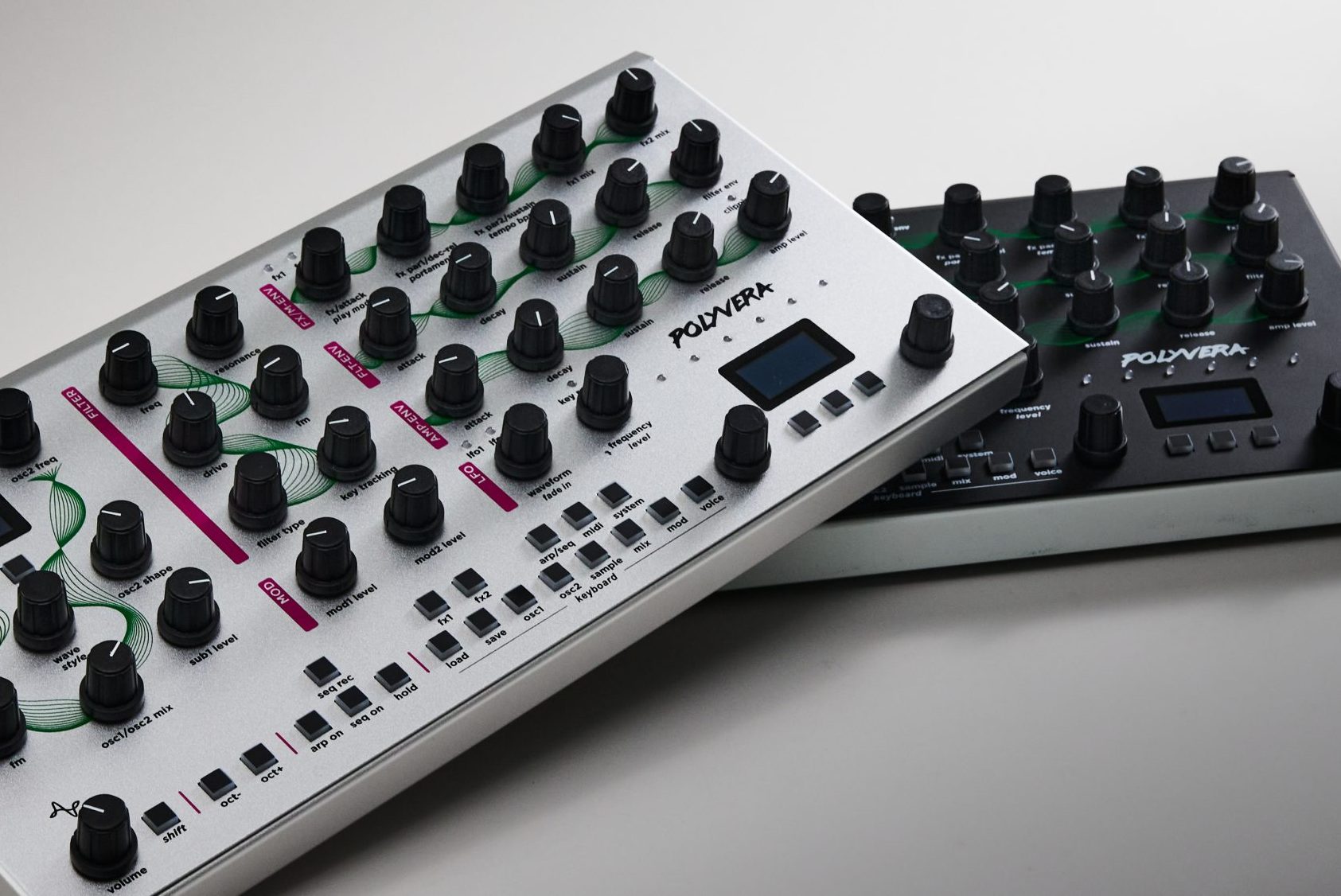
Polyvera
Polyphonic digital/analog synthesizer and sampler with 6 voices and effects
Polyvera is the result of 4 years of hard work. I am really excited to be able to finally share with likeminded musicians.
Polyvera revives details of the 80s digital sound that we love and reinterprets them in a modern way, thanks to analog filters and powerful sound design features, to create sounds that go beyond legacy.
At the core of Polyvera there are 2 oscillators (wavetable or sampler) with modern and vintage digital styles. While analog-style warm waveforms are possible, the oscillators can even recreate the alias and digital grit of early vintage synthesizers and samplers.
A multimode analog filter with overdrive fattens the sound and shapes the digital artifacts in new and musical ways.
Two effects and versatile modulation options enrich the sound with details.
Polyvera is designed for musicians who want to go beyond clones and for sound explorers who go beyond presets.
NEW: Polyvera (Silver edition):
(EUR 1.199 / USD 1349 excl. VAT (EU customers), excl. taxes/customs (non-EU customers). Local currency shown at checkout.
Polyvera (Black):
(EUR 1.199 / USD 1349 excl. VAT (EU customers), excl. taxes/customs (non-EU customers). Local currency shown at checkout.
Polyvera (Black) + 19″ Rack Ears:
(EUR 1.224 / USD 1379 excl. VAT (EU customers), excl. taxes/customs (non-EU customers). Local currency shown at checkout.
Vintage digital
At the beginning of the 80s, technology allowed the release of the first affordable digital wavetable oscillators and samplers. Those brilliant engineers had to invent creative solutions to cope with the processing and memory limitations of that time.
The result was a gritty, artificial timbre, rich of alias and artifacts, which became a trademark of the digital electronic sound of the 80s. Already by the end of the decade, technology had evolved to the point that digital artifacts had become barely audible and far less interesting, in a musical sense.
Polyvera’s oscillators recreate digital artifacts that are carefully styled after some of the most iconic wavetable synthesizers and samplers from the early 80s. You can switch between high-quality modern-sounding oscillators and various vintage models, even including modded versions of vintage instruments.
Analog heart
A secret of the early 80s digital synthesizers and samplers is that they actually used analog filters, which greatly contributed to the beauty and punch of their sound. Polyvera innovates those vintage filter designs by providing 8 different analog filter types based on a classic synth analog filter chip. The filters can be overdriven, they can be brought to self-oscillation and can be frequency-modulated, providing endless flavors ranging from classic analog sounds to purely experiemntal ones. The lowpass filter can even be combined with an analog post-filter distortion stage.
The combination of vintage-sounding digital oscillators with Polyvera’s proprietary warm analog filters is the key to the beauty of its sound.
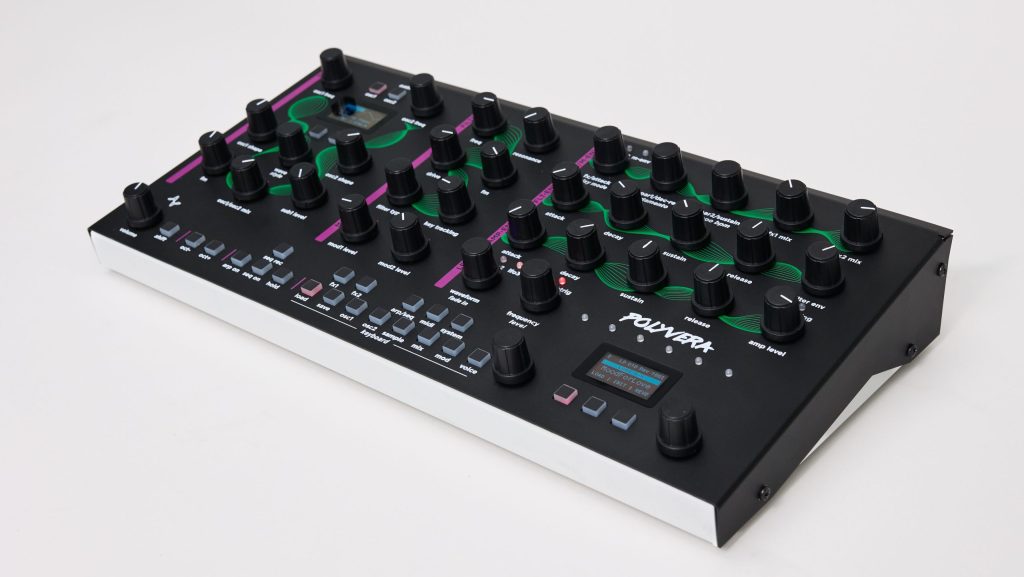
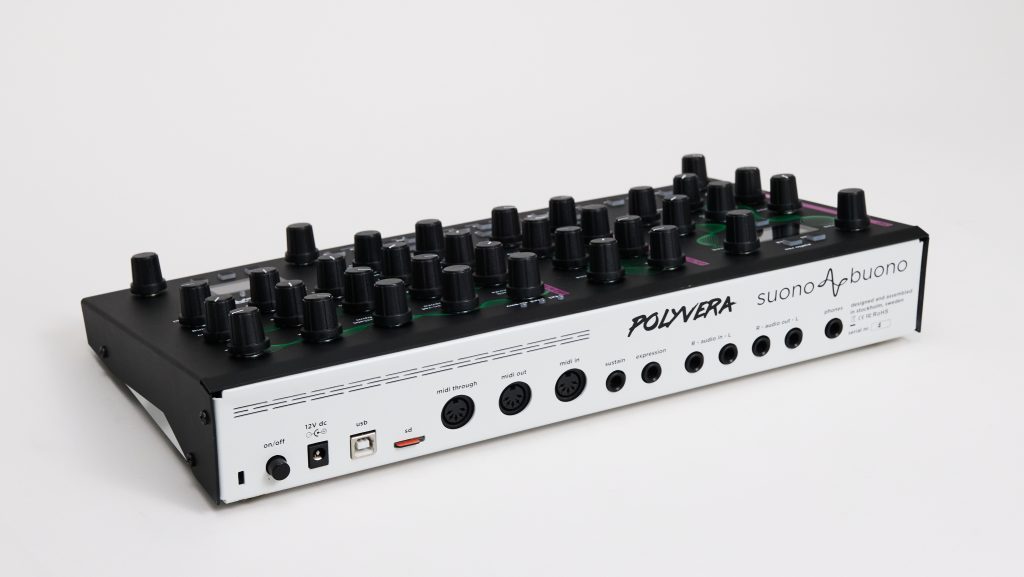
Firmware and Manual
September 2025: Latest manual (v0.91, based on FW 0.28).
A manual update based on firmware 0.30 is in the making.
Report an issue / Request a feature
Progress: December 2025
The Silver edition is out and shipping! And new firmware 0.30 with new features is released.
Progress: November 2025
A new batch is in production and will tentatively ship from December. Please regularly check this website and our social media for updates.
Progress: July 2025
A new batch is in production and will tentatively ship by end of September. You may order it on this webshop, or from partner dealers. Don’t wait too long, request is still higher than production rate.
Progress: June 2025
The first batch is out! A new, bigger batch is in the making and will be announced on social media and newsletter. Huge thanks to all of you who supported the project from the beginning.
Progress: May 2025
Full focus on assembling and testing the first batch, which I am still cautiously optimistic to be able to ship by the end of June, as promised. There will be 256 presets included from the start, many of which are MPE and poly-aftertouch compatible. I plan to share more preset banks for free at a later stage.
Progress: March 2025
Every Polyvera unit includes 3 electronic boards, all of which have been produced for the first batch. Some manual soldering is still required, though. All custom mechanical parts such as the aluminum cases, the display glasses, the buttons, the knobs and a few internal parts have been produced.
Electromagnetic compatibility tests have been completed and certifications have been issued.
Assembly and testing are pending and expected to take a significant amount of time.
The firmware is pretty stable, however bugs and improvements are periodically identified.
Sound design is ongoing, in cooperation with external musicians, which is also an important part of beta testing. A considerable amount of time is still needed to develop the presets.
A first version of the manual has been written, however many updates are pending. Work on packaging is ongoing.
A 20 min overview video has been published, I am not planning any new major video or sound recording work, priority is production at this stage.
